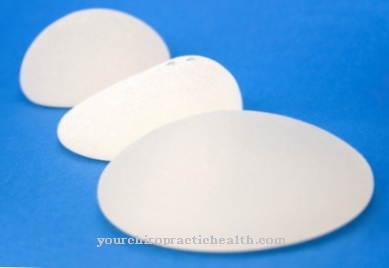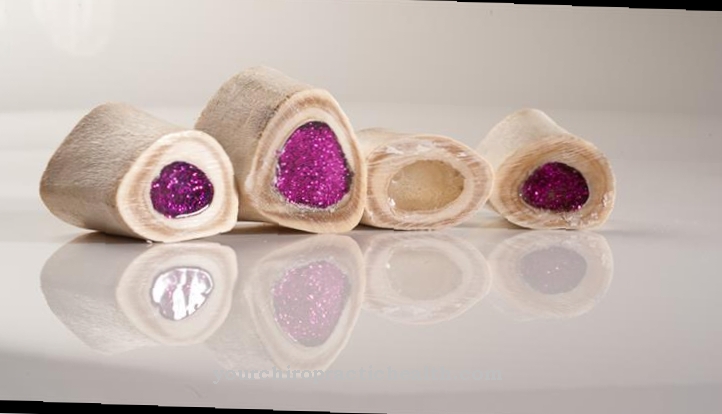As one Gauze bandage is a non-sterile dressing that can be used to cover wounds, for example. Since these were not elastic in earlier times, the gauze bandage must actually be differentiated from the elastic bandages known today. However, most gauze bandages are now at least partially elastic.
What is a gauze bandage?

The term gauze bandage comes from earlier times. At that time, bandages with which wounds or injuries were bandaged consisted mainly of bandages made of the material gauze. The word 'Mull' arises indirectly from Hindi and is derived from the word 'malmal'. This means 'very soft' in German.
The first gauze bandages were given to soldiers who always carried them with them as quick supplies. Gauze is often called gauze. This is a very light and thin fabric. This is due to the fact that the threads are very finely twisted and woven together.
Today the material is offered in a wide variety of designs and can therefore be stronger, finer and more flexible. However, since previously only the inelastic gauze bandage was available, various bandaging techniques had to be learned so that the wound bandage stayed in place. Most of these techniques are only known to a limited extent today.
Shapes, types & types
As already mentioned, the gauze bandage as such is represented today in a wide variety of designs. In most cases, it differs in strength and flexibility. There are still very thin and light gauze bandages that are preferred for use on pressure-sensitive wounds, for example, for minor burns. These often have to be protected from germs and harmful influences from the outside, which makes a stable and safe, but also light and gentle bandage necessary that is comfortable to wear. Injuries that need to be stabilized are treated with firm and therefore often thick material.
In addition, the gauze bandage is mostly only used today as a fixation for sterile wound dressings. Wounds and injuries that have to be bandaged sterile are usually treated with sterile bandages. These are characterized by the fact that the bandages or pads are individually and sterile packed. Here, too, gauze bandages are used which, for example, are firmly connected to a sterile pad. The material is then often a little stronger and more flexible than a normal gauze bandage.
In addition, there are now gauze bandages in different colors, in different widths and lengths and even in self-adhesive form. This is to ensure that there is the right gauze bandage for every application.
Structure & functionality
A gauze bandage, as it is called in Switzerland, for example, usually consists of an average of about 4 to 6 centimeters wide and 2 to 4 meters long. This is rolled up into a roll. As a result, the gauze bandage can be applied quickly and easily as a bandage around a part of the body that has a wound or other injury.
Mostly, sterile pads or compresses are fixed on injuries and wounds with ointments using a gauze bandage. The type of wound or injury that needs to be treated will usually determine which type of bandage is best. Injuries such as sprained or pulled joints require different care than open wounds or burns. A sterile bandage variant must be selected, especially in the latter case of injury. Ordinary gauze bandages or even reused bandages and compresses should never be used.
In the case of injuries that did not result in open wounds, ordinary gauze bandages can be used - if necessary several times, although this is not recommended from a medical point of view. Because gauze bandages quickly lose their shape and thus their stabilizing or protective effect. In addition, remnants of ointments could always be found on a bandage that has already been used.
Medical & health benefits
Gauze bandages are used to treat injuries or to protect wound healing. This happens, for example, by fixing sterile and aseptic pads on wounds or by stabilizing an injured part of the body. The type of supply and bandage required in the case of an injury always depends on the type of injury.
Some wounds only need to be protected by a light bandage that prevents germs and the like from entering them. Other injuries require support, and still others require only a compress or pad to be reliably held in place. For this reason, gauze bandages are available today in countless variations and types: they are sometimes flexible and firm, sometimes light and extremely thin, sometimes self-adhesive and sometimes sterile.
It is therefore advisable to always have a small selection of different dressing materials in the medicine cabinet. Most first aid kits, first aid kits and the like that are commercially available usually contain various types of gauze bandages. But: even gauze bandages - especially sterile versions - have an expiry date and should therefore be checked regularly for this.
























.jpg)



